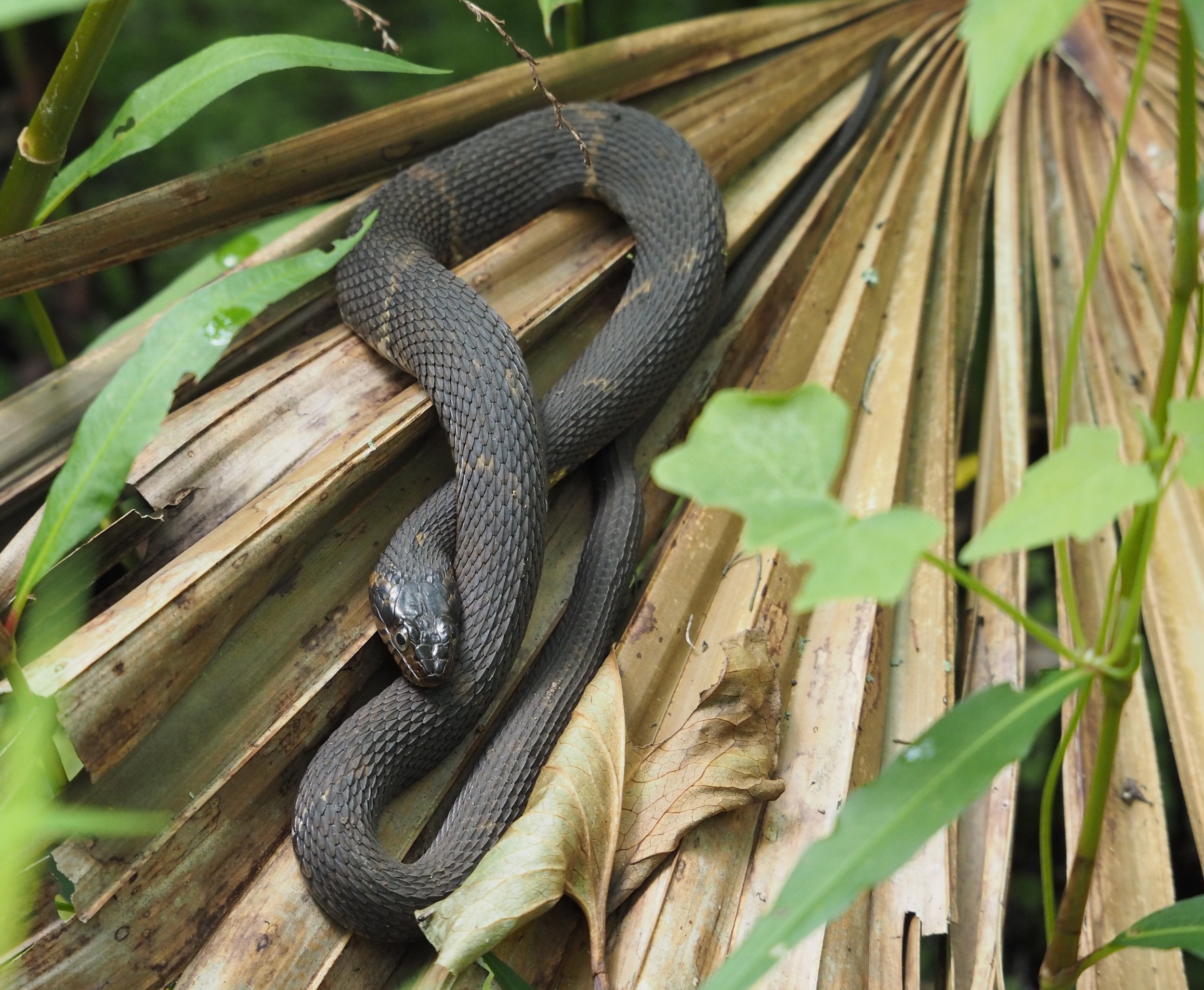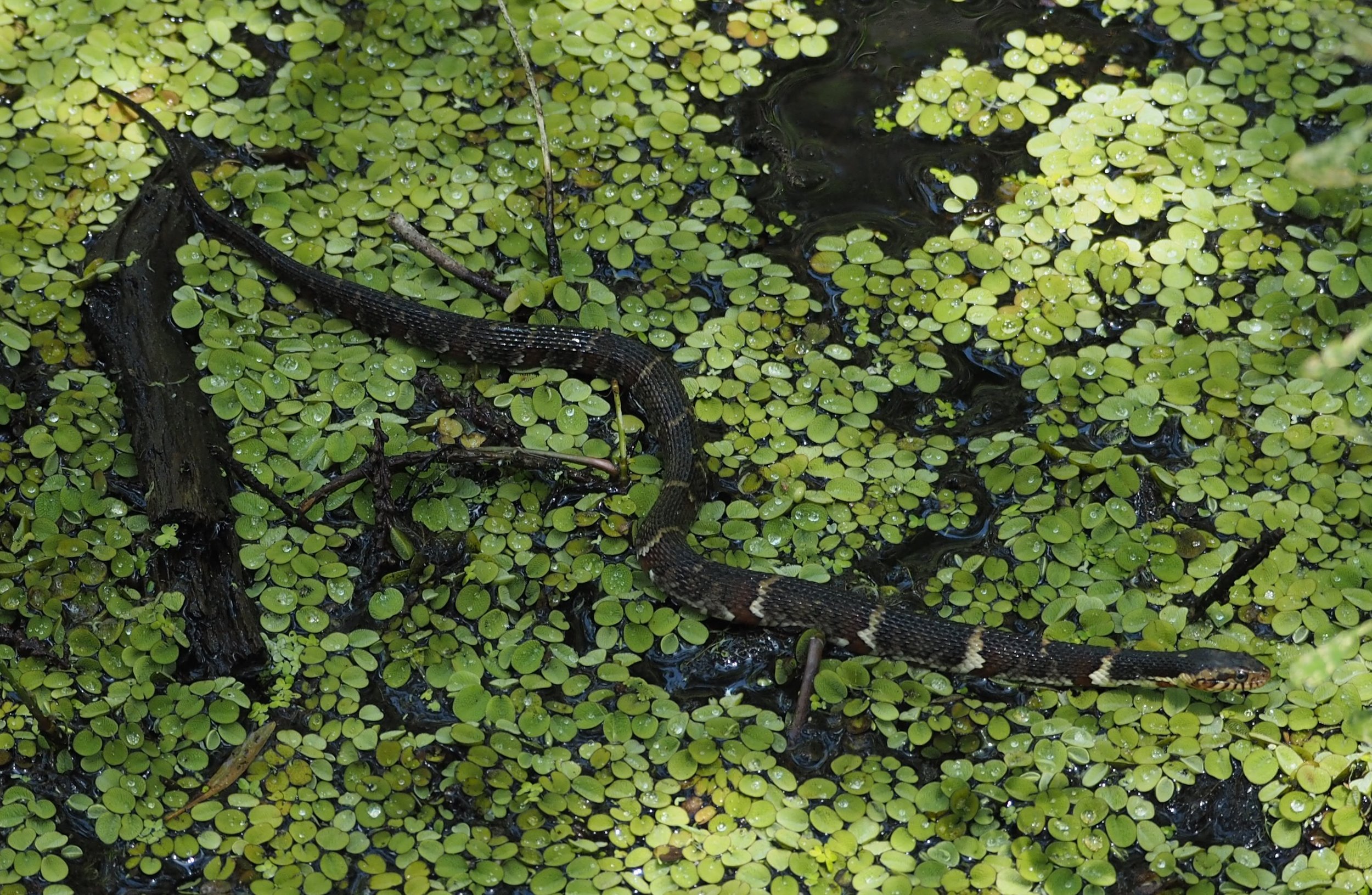Banded Water Snake
The banded water snake or southern water snake (Nerodia fasciata) is a species of mostly aquatic, nonvenomous, colubrid snake endemic to the central and southeastern United States. It is found from Indiana, south to Louisiana and east to Florida.
Adults of the banded water snake measures from 24" to 42" in total length, with a record size (in the Florida subspecies) of 62.5" in total length. In one study of the species, the average body mass of adult snakes was 16.38 oz.
It is typically gray, greenish-gray, or brown in color, with dark cross-banding. Many specimens are so dark in color that their patterning is barely discernible. They have flat heads, and are fairly heavy-bodied. If irritated, they release a foul-smelling musk to deter predators. Their appearance leads them to be frequently mistaken for other snakes with which they share a habitat, including the less common, venomous cottonmouth.
Nerodia fasciata inhabits most freshwater environments such as lakes, marshes, ponds, and streams. It preys mainly on fish and frogs. Using its vomeronasal organ, also called Jacobson's organ, the snake can detect parvalbumins in the cutaneous mucus of its prey.
The species is ovoviviparous, giving birth to live young. The brood size varies from 9 to 50.

By J. Maughn. CC BY-NC 2.0, via Flickr

By J. Maughn. CC BY-NC 2.0, via Flickr
